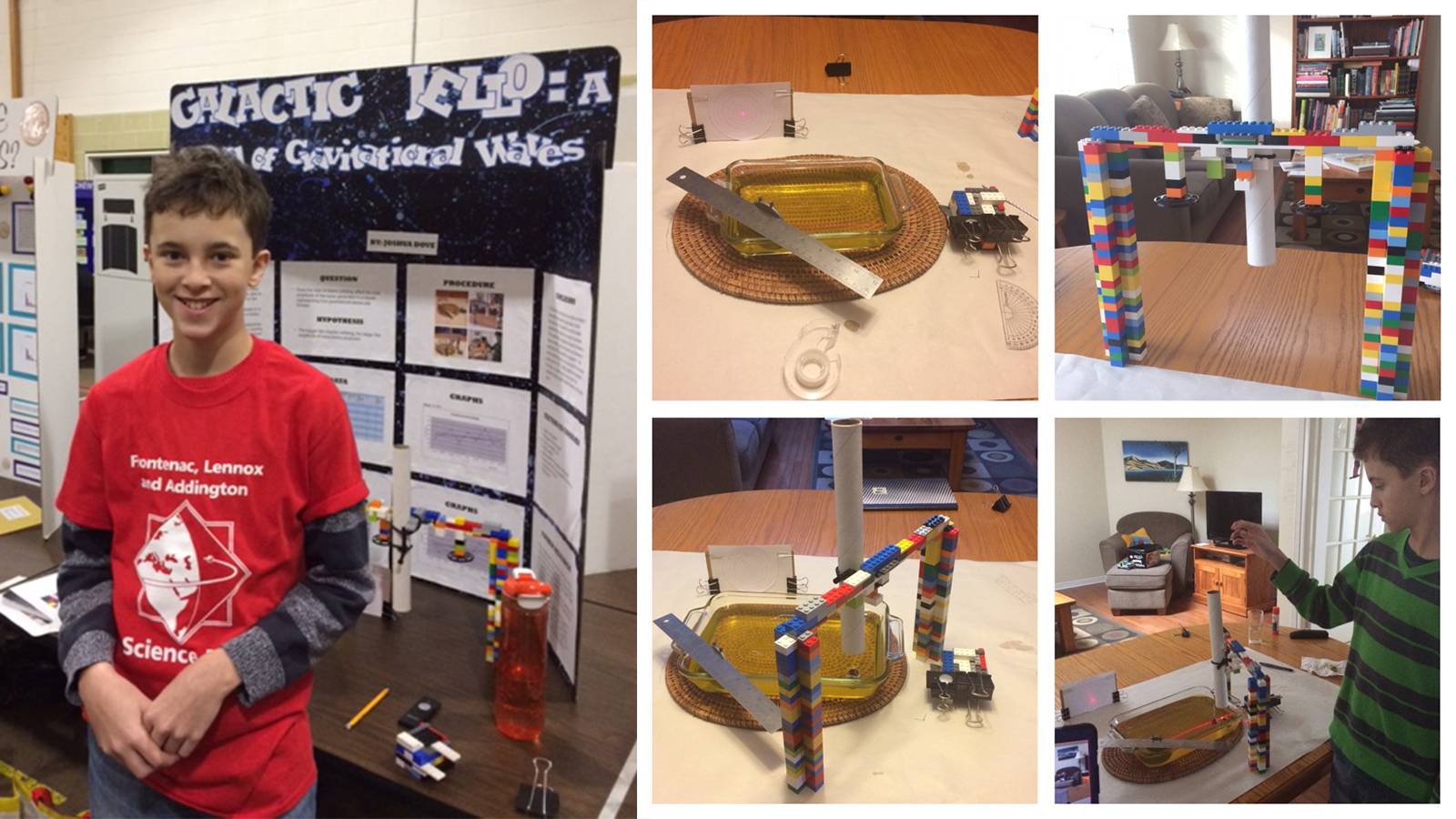|
Friday, June 30, 2017
JPL News - Day in Review
Thursday, June 29, 2017
JPL News - Day in Review
|
NASA Jet Propulsion Laboratory
NASA's Jet Propulsion Laboratory
4800 Oak Grove Dr
Pasadena, CA 91109
Posted by
Deep
at
4:42 PM
0
comments
![]()
Tuesday, June 27, 2017
JPL News - Day in Review
|
NASA Jet Propulsion Laboratory
NASA's Jet Propulsion Laboratory
4800 Oak Grove Dr
Pasadena, CA 91109
Posted by
Deep
at
4:26 PM
0
comments
![]()
Monday, June 26, 2017
JPL News - Day in Review
|
NASA Jet Propulsion Laboratory
NASA's Jet Propulsion Laboratory
4800 Oak Grove Dr
Pasadena, CA 91109
Posted by
Deep
at
5:03 PM
0
comments
![]()
Friday, June 23, 2017
JPL News - Day in Review
|
NASA Jet Propulsion Laboratory
NASA's Jet Propulsion Laboratory
4800 Oak Grove Dr
Pasadena, CA 91109
Posted by
Deep
at
9:13 AM
0
comments
![]()
Thursday, June 22, 2017
JPL News - Day in Review
|
NASA Jet Propulsion Laboratory
NASA's Jet Propulsion Laboratory
4800 Oak Grove Dr
Pasadena, CA 91109
Posted by
Deep
at
5:28 PM
0
comments
![]()
JPL Education ‘Teachable Moment’ Inspires Winning Science Fair Project
|
NASA/JPL Edu
NASA's Jet Propulsion Laboratory
4800 Oak Grove Dr
Pasadena, CA 91109
Posted by
Deep
at
2:21 PM
0
comments
![]()
Wednesday, June 21, 2017
JPL News - Day in Review
|
NASA Jet Propulsion Laboratory
NASA's Jet Propulsion Laboratory
4800 Oak Grove Dr
Pasadena, CA 91109
Posted by
Deep
at
4:50 PM
0
comments
![]()
How to Watch This Summer's Total Solar Eclipse
|
NASA/JPL Edu
NASA's Jet Propulsion Laboratory
4800 Oak Grove Dr
Pasadena, CA 91109
Posted by
Deep
at
2:10 PM
0
comments
![]()
Here's an idea that could make you a small fortune...
Hi chantybanty1.chanti,
I'm not one to just go around and tell my friends random things� If you know me, then you know that I always like to make sure that I know what I'm talking about first.
This is why I waited so long before telling you what is in this email.
One of my closest friends works at a high tech medical firm. They discovered a very successful cure for a certain type of tumor.
For some odd reasons though, their share price crashed through the floor. It went from 2 bucks to like 10 cents over the last few weeks.
My buddy believes that this is due to people being misinformed regarding a new trump policy.
The reality is, the company I'm telling you about right now is about to get f d a approval in the next few weeks and their price is guaranteed to go up more than 15 times its current price.
This is why I think you should take a very close look at q's'm'g (without the apostrophes of course). This is the ticker of the company in question.
If you want something that's practically a sure bet, I recommend you get in this stock today. Even if it's for a modest amount.
You'll be in for a good ride.
Best Regards,
Karl Waters
Posted by
Deep
at
3:05 AM
0
comments
![]()
Here's an idea that could make you a small fortune...
Hi chantybanty1.chanti,
I'm not one to just go around and tell my friends random things� If you know me, then you know that I always like to make sure that I know what I'm talking about first.
This is why I waited so long before telling you what is in this email.
One of my closest friends works at a high tech medical firm. They discovered a very successful cure for a certain type of tumor.
For some odd reasons though, their share price crashed through the floor. It went from 2 bucks to like 10 cents over the last few weeks.
My buddy believes that this is due to people being misinformed regarding a new trump policy.
The reality is, the company I'm telling you about right now is about to get f d a approval in the next few weeks and their price is guaranteed to go up more than 15 times its current price.
This is why I think you should take a very close look at q's'm'g (without the apostrophes of course). This is the ticker of the company in question.
If you want something that's practically a sure bet, I recommend you get in this stock today. Even if it's for a modest amount.
You'll be in for a good ride.
Best Regards,
Sally Townsend
Posted by
Deep
at
2:39 AM
0
comments
![]()
Tuesday, June 20, 2017
JPL News - Day in Review
|
NASA Jet Propulsion Laboratory
NASA's Jet Propulsion Laboratory
4800 Oak Grove Dr
Pasadena, CA 91109
Posted by
Deep
at
5:09 PM
0
comments
![]()
This company just found a huge cure and no one knows about it yet!
Did you ever read an article online, or in a magazine praising some so called guru for making a few hundred grand out of just a few thousand by buying just one stock?
These articles are very common and they always make it seem like the guy (or gal) was an expert at this stuff.
I know for a fact that the only way to win in this is to have information that others don't. It's that simple.
If you know that something is going to happen before everyone else does, then you've got the edge.
Just in May, this company I've been watching was trading at a little over 2 bucks alright?
Within days, it got pummeled to just pennies. Apparently, on the incorrect rumor that their new immune medicine wasn't working.
Now that the dust has settled, it's clear that the information was completely wrong. It just caused a panic, and herd mentality prevailed.
I have an �in� at the company and I know for a fact that not only does this new ground breaking treatment work, but that it just got approved by the f d a.
While this info isn't public yet, once it does become so, you can expect the share price to go right back up to over two dollars. Quite literally overnight. And I am expecting this announcement to come in the next few days.
The symbol you need to buy the stock is q/s/m/g without the / of course. You just give that to your broker or go to your online account and get at least twenty thousand shares.
If you act quickly and get in right now, maybe you'll be one of those cool winner stories people write about in magazines and articles.
Posted by
Deep
at
11:19 AM
0
comments
![]()
This company just found a huge cure and no one knows about it yet!
Did you ever read an article online, or in a magazine praising some so called guru for making a few hundred grand out of just a few thousand by buying just one stock?
These articles are very common and they always make it seem like the guy (or gal) was an expert at this stuff.
I know for a fact that the only way to win in this is to have information that others don't. It's that simple.
If you know that something is going to happen before everyone else does, then you've got the edge.
Just in May, this company I've been watching was trading at a little over 2 bucks alright?
Within days, it got pummeled to just pennies. Apparently, on the incorrect rumor that their new immune medicine wasn't working.
Now that the dust has settled, it's clear that the information was completely wrong. It just caused a panic, and herd mentality prevailed.
I have an �in� at the company and I know for a fact that not only does this new ground breaking treatment work, but that it just got approved by the f d a.
While this info isn't public yet, once it does become so, you can expect the share price to go right back up to over two dollars. Quite literally overnight. And I am expecting this announcement to come in the next few days.
The symbol you need to buy the stock is q/s/m/g without the / of course. You just give that to your broker or go to your online account and get at least twenty thousand shares.
If you act quickly and get in right now, maybe you'll be one of those cool winner stories people write about in magazines and articles.
Posted by
Deep
at
10:15 AM
0
comments
![]()
Not sure where to invest? Here's a sure bet.
Our country is going through a strange era. Recent political changes have oddly affected the markets and pretty much most stocks are on over drive right now.
If you have just a few thousand bucks to put into something, picking a winning company is not very easy since everything is so inflated.
I do however know of one that could be life changing. You know, it's a situation like one of those that you only read in the newspaper.
How a guy got really lucky when he put a few thousand in some small company and he made out like a bandit.
Is it just luck though? Or is there more to it than meets the eye?
I have it on good authority that a small medical research company has made a giant breakthrough in getting approval for a rare form of cancer.
Their shares were at over 2 bucks a couple of months ago, but sank to just a few cents when rumors spread that the treatment was ineffective in people.
Those rumors were not false, but they were based on segmented information.
The truth is that the treatment works and the company just got it past government approval.
The news is not public yet, though. At just a few cents a share, you have no downside. You can get in right now at rock bottom and watch it go right back to where it was a few months ago (to over 2 bucks) in a matter of hours once the announcement is out.
The symbol you need to use for the stock is q-s-m-g without the hyphens of course. You just give that to your broker or put it in yourself online in your portal and get in.
Maybe, you too, can make the newspapers for being a "lucky" person but you and I both know the real story.
Posted by
Deep
at
4:35 AM
0
comments
![]()
Monday, June 19, 2017
JPL News - Day in Review
|
NASA Jet Propulsion Laboratory
NASA's Jet Propulsion Laboratory
4800 Oak Grove Dr
Pasadena, CA 91109
Posted by
Deep
at
4:54 PM
0
comments
![]()
Blog Archive
-
▼
2017
(379)
-
▼
June
(33)
- JPL News - Day in Review
- JPL News - Day in Review
- JPL News - Day in Review
- JPL News - Day in Review
- JPL News - Day in Review
- JPL News - Day in Review
- JPL Education ‘Teachable Moment’ Inspires Winning ...
- JPL News - Day in Review
- How to Watch This Summer's Total Solar Eclipse
- Here's an idea that could make you a small fortune...
- Here's an idea that could make you a small fortune...
- JPL News - Day in Review
- This company just found a huge cure and no one kno...
- This company just found a huge cure and no one kno...
- Not sure where to invest? Here's a sure bet.
- JPL News - Day in Review
- In less than 5 days this company could yield you a...
- In less than 5 days this company could yield you a...
- JPL News - Day in Review
- You can make more than ten times your principle wi...
- You can make more than ten times your principle wi...
- NASA/JPL Educator Workshop – Engineering on a Budget
- Let me tell you why this stock will go up 10x by n...
- Here's why this company's shares are about to go u...
- Here's why this company's shares are about to go u...
- Here's why this company's shares are about to go u...
- JPL News - Day in Review
- JPL News - Day in Review
- Работа на дому (2500 долларов США) Требуется перев...
- JPL News - Day in Review
- JPL News - Day in Review
- 29618835.pdf
- JPL News - Day in Review
-
▼
June
(33)
About Me
- Deep
- Hey all am sundeep......

















